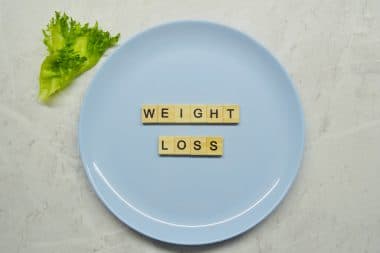Intermittent fasting, as a weight loss diet is slowly taking its spotlight in the fitness industry. It is a diet that involves feeding patterns where there is a restriction of energy intake for a period followed by an average food intake daily.
Aside from weight loss, intermittent fasting also promotes autophagy or the body’s automatic cleaning systems, which is known to have anti-aging effects and keeps the cells younger and healthier.
Consequently, an increase in autophagy due to intermittent fasting delays the onset of age-related diseases, which include cancer, Alzheimer’s disease, and heart disease.
However, did you know that there is a right way of doing intermittent fasting? Below are some tips that you can follow to increase your chances of success if you’re having any trouble using the intermittent fasting technique.
Do Not Eat During Your Fasting Time
For some who already have the gist of the diet, this should be a no-brainer because you are fasting, so you should not be eating. But for others, say beginners or new to intermittent fasting this may come as news to you. Yes, there are protocols like the 16:8 diet or the modified alternate-day fasting diet that allows you to fast when, in fact, you are not abstaining from eating. The truth, with this diet, is you are eating but with meager calories. That can throw lots of people off when they’re doing this obligation only to find out that it is not working for them.
The reason for that is because, a lot of the benefits that come from intermittent fasting comes from being in a consistent fasted state, where you are not consuming anything, and are not allowing your body to use any external sources of energy. Instead, you are just using internal sources of energy like body fat, fat conversion, and fat oxidation.
So if you want to do the 16:8 diet, then go ahead. If you’re going to do the alternate day fasting diet, go on ahead. Keep in mind though that you need to do them in the way that it is intended to be done without consuming any calories at all during the fasted period. If there is some resistance or you’re not seeing results or something is holding you back, and you are eating during your fasting window, then you are cutting off a chunk of what makes intermittent fasting beneficial.
It is being in that consistent fasted state that gives intermittent fasting its inherent benefits. So don’t throw it away by doing a protocol that’s merely low-calorie or very low calorie. It might help you with calorie control, but it’s not going to help you with the actual goal and the metabolic switchover that you might be looking for when not eating during your fasting schedules in intermittent fasting.
Give Your Stomach An Initial Wake-Up Call
Problems like stomach pain or digestive issues usually occur when you start intermittent fasting without understanding the entire process. In doing intermittent fasting, you should keep in mind that when you fast your stomach relaxes, together with the bile in your stomach, and the mucus lining, these organs become very sensitive because they are not digesting food.
In breaking your fast, you should first eat foods that are easy to digest. Watery foods such as apples and bananas are examples of these foods because they don’t require the stomach to work so hard. That gives the stomach a wake-up call without being too aggressive.
Contrarily, if you eat, say, for example, steak as your fast break, instantly, that can elicit an upset stomach or digestive issue. Soft and watery foods allow you to get those calories in and to wake your stomach up to get the digestive system started. It is recommended to avoid hard to digest foods while breaking your fast at the first instant.
Shift The Gears On Your Insulin And Blood Sugar Levels
Along with giving your stomach wake up call in breaking your fast, you should also know that when you are fasting, your insulin level would be literally like on a springboard as it is waiting for glucose to come in. Eventually, it is going to shoot up aggressively because you haven’t eaten anything. At the same time, your blood sugar levels have been normalized for a particular time, and breaking your fast would disrupt the normalized level. Thus, you want to kill two birds with one stone when you break your fast.
The right way to do it is by eating foods that are low on the glycemic index (low sugar content foods) so that your blood sugar, instead of abruptly spiking high, will sporadically increase. After you have ingested a low sugar content food, it is advised that you should wait 10 to 20 minutes before getting into the regular meals that you will eat.
Following these steps, if you are having stomach issues because you’re breaking your fast with large meals, this can help with your digestion and with any irritability that you might have.
Eat Something Healthy When Breaking Your Fast
The next right thing to do is to eat healthy when breaking your fast. That doesn’t mean eating broccoli, chicken, and the like, but make sure that you have the macronutrients that you need. That you’re consuming things that are healthy for you for it improves satiety, and the health benefits of eating healthy foods that carry loads of nutrition will be a benefit for you as well.
A lot of people like to use intermittent fasting as an “I can do whatever I want” card, and maybe if all you are focusing on is just weight loss, then you probably can eat whatever you want. Intermittent fasting is going to assist you with weight loss. But if longevity is remarkable to you, intermittent fasting has some elements of that concept. However, you still have to make sure that you’re eating healthy to create the best scenario for things like building muscle, for staying healthy, for sleep, etc.
Time Your Meals Conveniently
Another point in doing the intermittent diet the right way is to time your meals conveniently to your lifestyle. Instead of bombarding yourself with studies telling you that you should eat at night or the wee hours of the morning, none of that matters in the long run. It is because the little incremental changes or differences and benefits that you would get from eating in the morning or from eating at night do not outweigh the convenience factor on timing your meal in a convenient time frame.
This will allow you to time your meals repeatedly and routinely because you strategized consistently. And you didn’t just create an eating window that interferes with so many things within your life like your job, family, workouts, and many other things.
In doing intermittent fasting you want to make sure that you throw it in the perfect location. You put it in the slot like a puzzle piece, not just throwing it anywhere. Failure to do so will make it easier for you to fall off the entire protocol and then restart yourself back to zero and later try to figure out a way to get back into intermittent fasting. However, when you have already strategized for your meals, to begin with, adherence is critical, make sure that you do things that will make it easier for you to follow the protocol for the rest of your life
Conclusion
If you do not see the best results or if you’re having any issues with sleep and your weight while doing intermittent fasting, the points mentioned above are things that you should be looking for. Check things off to make sure that you’re doing intermittent fasting the right way.
Whatever diet you may have, always remember that your health should not be compromised over your fitness goals. Everything that is done in extremes is not healthy and should be balanced in any way possible. Doing intermittent fasting would be beneficial for weight loss, but doing it the right way would be a much more excellent catch not just for weight loss but for overall wellness.








Reply